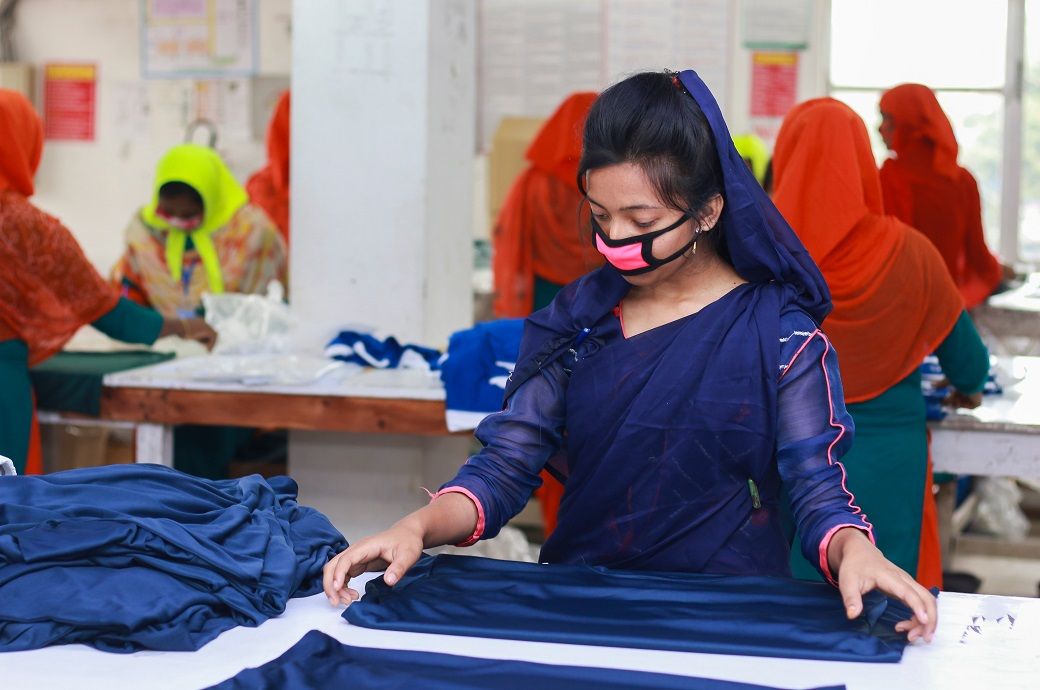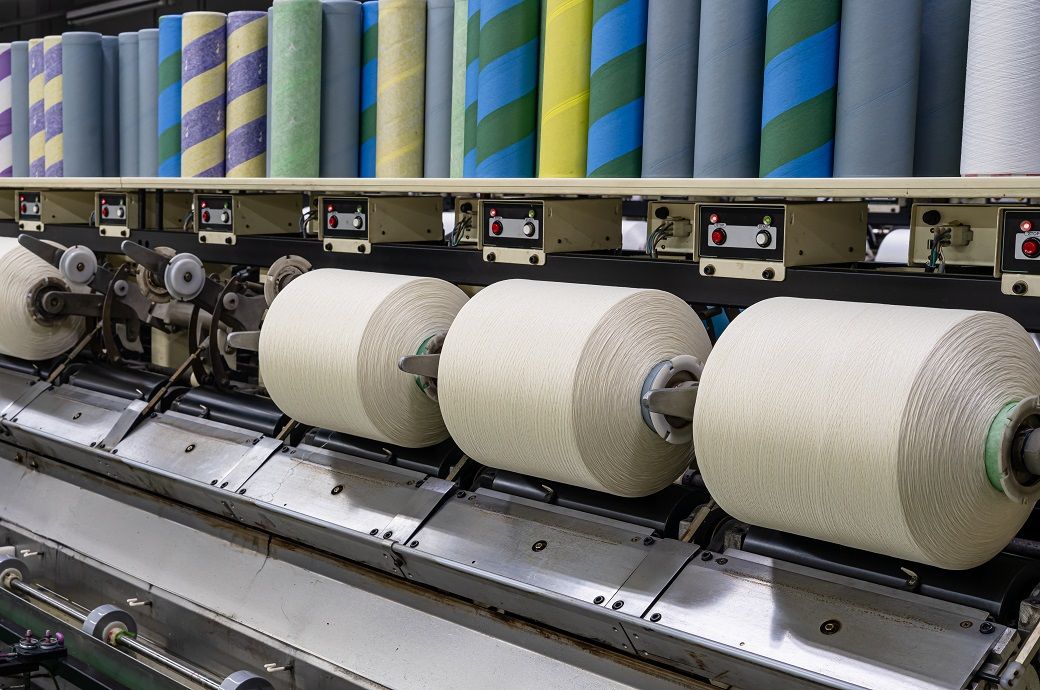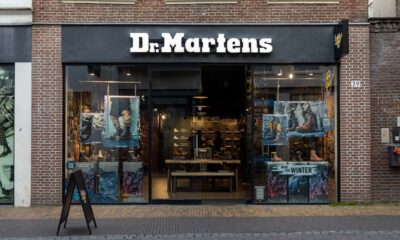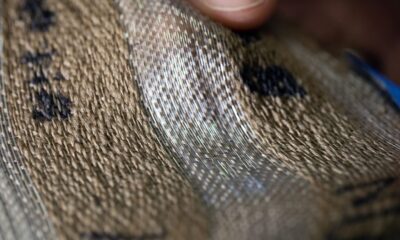Fashion
Bangladesh’s BGMEA makes unit price entry mandatory for UD certificate

A UD certificate is a key customs document authorising the use of duty-free imported raw materials for manufacturing export-oriented garments. It is required for customs clearance, export processes and trade preferences and cash incentives.
The Bangladesh Garment Manufacturers and Exporters Association recently made it mandatory for factories to provide the unit price of imported raw materials and readymade garments produced for export to get utilisation declaration (UD) certificates.
The move, to be implemented from September 1, is aimed at ensuring transparency and accurate valuation in the industry.
The move is aimed at ensuring transparency and accurate valuation in the industry.
A BGMEA circular instructed member factories to include the information to receive the UD certificates from the trade body from September 1.
“To sustain the competitiveness of the locally produced exportable garment items in the international market and to maintain the trust of foreign buyers, it is essential to accurately declare the unit price of imported raw materials and the corresponding exportable garments produced in BGMEA member factories,” read the circular.
The notice said both global buyers and domestic regulators, including the National Board of Revenue, have raised questions about transparency and accurate value addition by the industry in the absence of unit price, according to domestic media outlets.
Both BGMEA and the Bangladesh Knitwear Manufacturers and Exporters Association (BKMEA) issue UD certificates to their members against each work order, detailing exporter, importer and raw material information.
Around 1800 member factories receive UD certificates from BGMEA every month.
Local garment items’ value addition remained almost static between 60 per cent and 64 per cent from fiscals 2012-13 to 2018-19, according to Bangladesh Bank data.
Fibre2Fashion News Desk (DS)
Fashion
American Eagle Outfitters raises annual sales forecast

By
Reuters
Published
December 2, 2025
American Eagle Outfitters raised its annual comparable sales forecast on Tuesday, betting on marketing-driven demand for its apparel and accessories during the holiday season, sending its shares up about 15% after the bell.
Marketing campaigns and newer collections of clothing, along with a focus on high-earning consumers, have helped the company offset losses from the broader retail slowdown and budget-conscious consumers pulling back on discretionary spending amid inflationary prices and trade-policy-driven uncertainty.
The company has been trying to boost demand through its marketing initiatives, including the “Great Jeans” denim campaign with actress Sydney Sweeney, a tie-up with NFL player Travis Kelce’s clothing brand Tru Kolors, and partnerships with tennis player Coco Gauff and actress Jenna Ortega.
The company sees annual comparable sales rising in the low single digits, compared to its previous expectations of about flat growth.
The company posted quarterly net revenue of $1.36 billion, compared with analysts’ estimates of $1.32 billion, according to data compiled by LSEG.
Quarterly comparable sales rose 4%, compared with analysts’ estimates of a 2.4% rise. The company sees current quarter comparable sales rising between 8% and 9%, compared with analysts’ estimates of a 2.2% rise.
© Thomson Reuters 2025 All rights reserved.
Fashion
Global manufacturing momentum weakens in November

Although three of the five PMI components continued to reflect improving operating conditions, employment and stocks of purchases contracted. Production and new orders rose for the fourth straight month, supported by consumer and intermediate goods, but investment goods saw renewed declines.
Thailand, India, Vietnam, Colombia, Pakistan and the US led global output rankings. The euro area and the UK registered mild growth, Japan contracted, and China saw output stagnate. Export demand remained a drag: global new export orders fell for the eighth consecutive month, though at the slowest pace in the current downturn. Developed markets such as the US, Japan and the euro area saw declines, while emerging markets, including mainland China and India, recorded increases.
Global manufacturing growth softened in November as the PMI slipped to 50.5, reflecting slower gains in output and new orders and a return to job losses.
Consumer and intermediate goods drove expansion, but investment goods weakened.
Export demand continued to contract, while business sentiment improved slightly yet stayed below average.
Inflation pressures persisted, especially in developed markets.
Business confidence edged up to a five-month high but stayed below its long-run average for the twentieth consecutive month. Brazil, Colombia and Thailand were the most optimistic, with the UK and the US also ranking high. The new orders-to-inventory ratio reached an eight-month peak, signalling tentative resilience ahead.
Employment fell for the second time in three months, with job cuts in China, the euro area and the UK offset by gains in the US, Japan and India. Backlogs of work continued to shrink, marking forty-one straight months of decline. Inventory, purchasing activity and input stock indices all pointed to contractions.
Input costs and factory-gate prices rose again, with inflation pressures sharper in developed markets. Supply chains remained strained as average vendor delivery times lengthened for the eighteenth month running.
“The JP Morgan global manufacturing output PMI fell back 0.3-points to 51.2 in November, a level consistent with modest but resilient growth in global industry. In our forward-looking indicators, the future output PMI made a reassuring 1.4-point rebound after dropping in October, though this was tempered somewhat by a fall in the new orders index to a four-month low. By economy, output in the US and India are still expanding at solid rates, whereas the performances in China and the rest of the G-4 remain lacklustre in comparison,” Maia Crook, Global Economist at JP Morgan, said in a release.
Fibre2Fashion News Desk (KD)
Fashion
Chinese group JD.com secures majority stake in holding company MediaWorld–Saturn

By
Ansa
Published
December 2, 2025
Chinese group JD.com has acquired an 85.2% stake in Germany’s Ceconomy, the holding company that controls the MediaMarkt (MediaWorld in Italy) and Saturn retail chains, in a deal worth €2.2 billion, according to several specialist trade publications.
Around 60% comes from JD.com’s takeover bid, with the remainder resulting from an agreement with Convergenta, the Kellerhals family’s holding company, which will retain a 25.35% stake. The company announced it in a statement.
Germany’s federal antitrust authority gave its approval in September, noting that JD.com had previously been ‘active in Germany only to a very limited extent.’
However, according to Ceconomy, completion of the public tender offer is still subject to approval by the relevant foreign trade authorities and to approval under the EU Foreign Subsidies Regulation. Completion is therefore expected in the first half of 2026.
This article is an automatic translation.
Click here to read the original article.
Copyright © 2025 ANSA. All rights reserved.
-

 Sports1 week ago
Sports1 week agoWATCH: Ronaldo scores spectacular bicycle kick
-

 Entertainment1 week ago
Entertainment1 week agoWelcome to Derry’ episode 5 delivers shocking twist
-

 Politics1 week ago
Politics1 week agoWashington and Kyiv Stress Any Peace Deal Must Fully Respect Ukraine’s Sovereignty
-

 Business1 week ago
Business1 week agoKey economic data and trends that will shape Rachel Reeves’ Budget
-

 Tech2 days ago
Tech2 days agoGet Your Steps In From Your Home Office With This Walking Pad—On Sale This Week
-

 Politics1 week ago
Politics1 week ago53,000 Sikhs vote in Ottawa Khalistan Referendum amid Carney-Modi trade talks scrutiny
-

 Tech1 week ago
Tech1 week agoWake Up—the Best Black Friday Mattress Sales Are Here
-

 Fashion2 days ago
Fashion2 days agoResults are in: US Black Friday store visits down, e-visits up, apparel shines


















